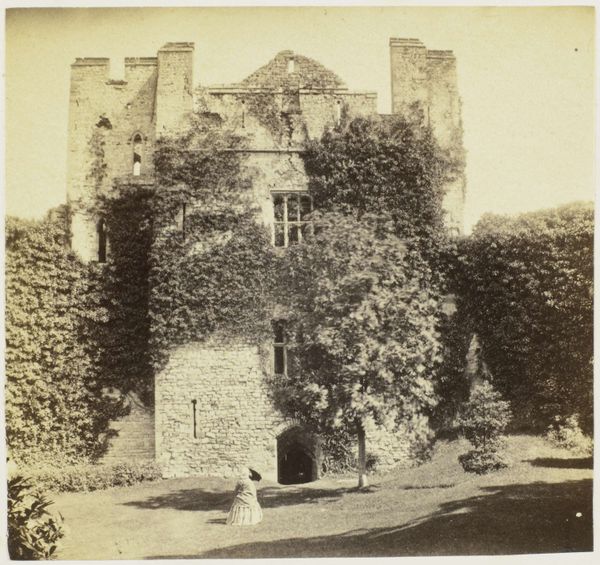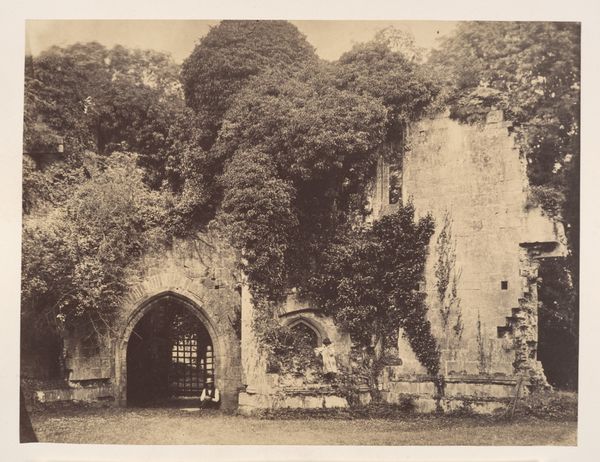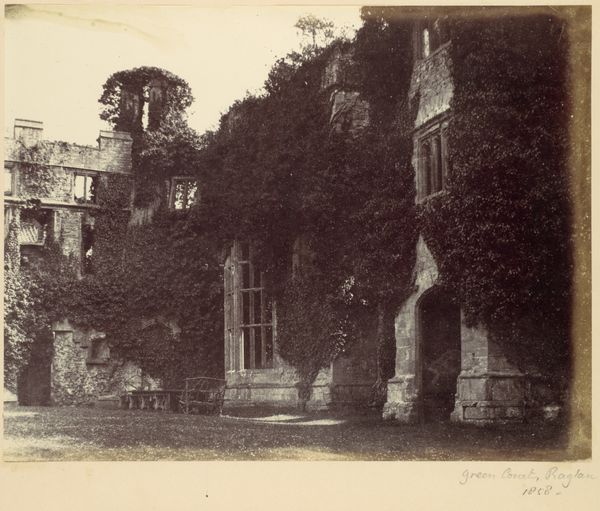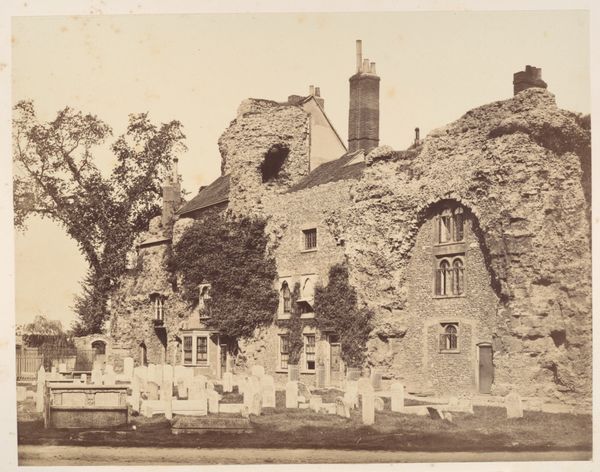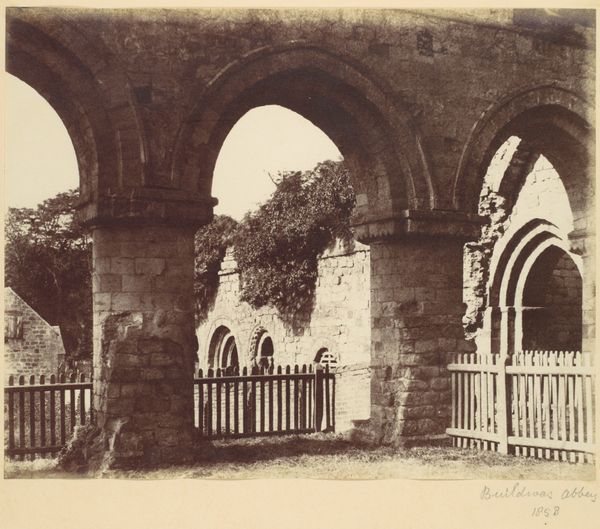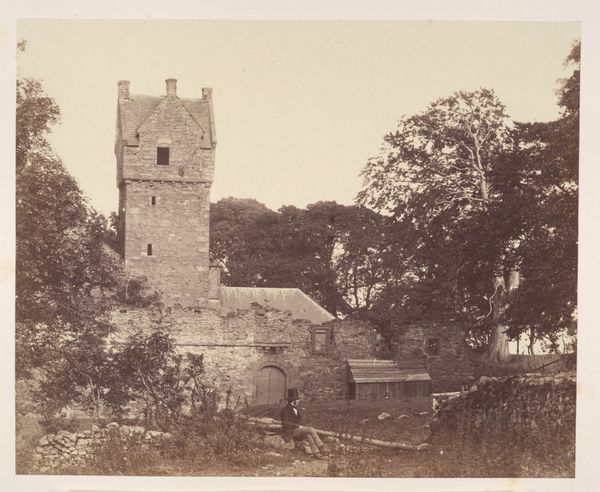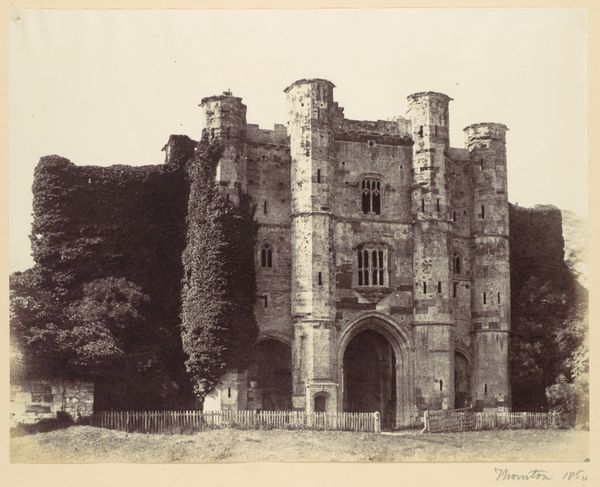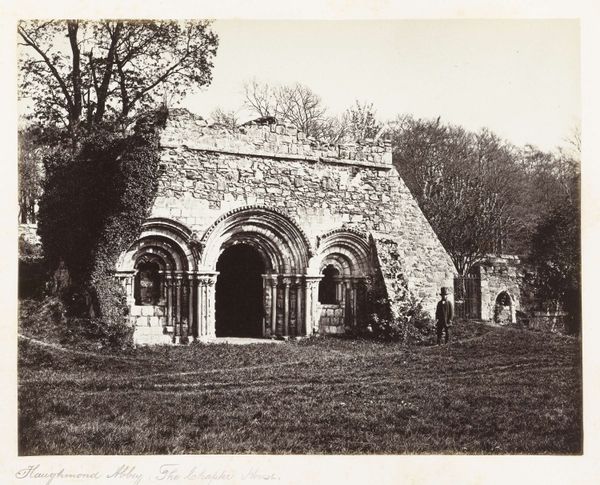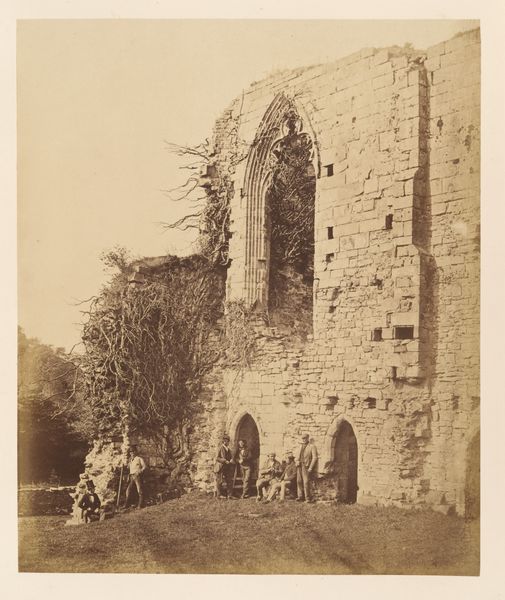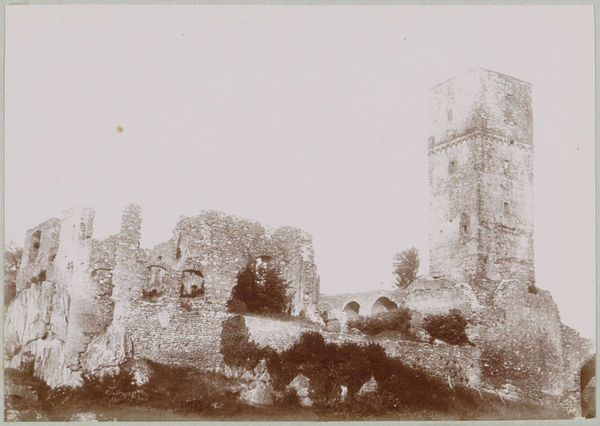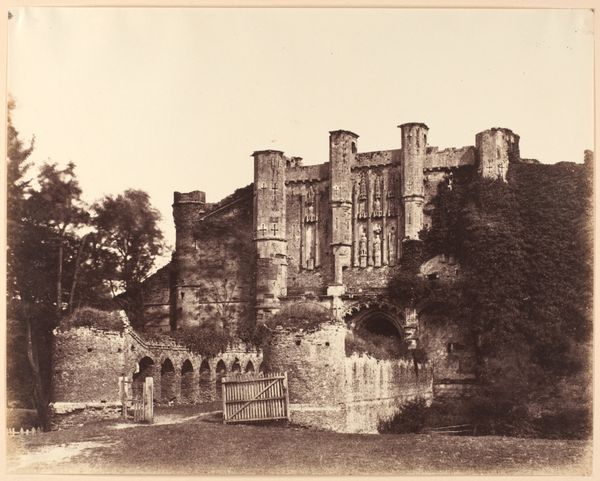
Dimensions: height 77 mm, width 85 mm
Copyright: Rijks Museum: Open Domain
Editor: So, this gelatin silver print is called "Ruïne van Raglan Castle te Monmouthshire," taken by Francis Bedford sometime before 1862. The crumbling architecture has such a melancholic feel, don't you think? What stands out to you when you look at it? Curator: The ruin, cloaked in ivy, whispers of time's relentless march. Do you see how the natural world embraces the man-made, almost reclaiming it? It evokes a potent symbol, one loaded with cultural memory, really, particularly in Victorian England. Editor: A symbol of what, exactly? Curator: Transience, certainly. But also the Romantic fascination with the past, with nature's power to overcome even the grandest of human creations. The ruin, so artfully composed by Bedford, becomes a meditation on mortality, decline, and the sublime force of nature. Even that figure sitting in the doorway, almost disappears, like a ghost. Editor: So the castle isn't just a backdrop. It’s more like… a reminder? A symbolic representation of bigger ideas? Curator: Precisely. Photography, at this time, sought to capture not just surface reality but deeper, emotional truths. The ruin carries echoes of bygone eras, reminding us of lost glories and inevitable decay, a visual *memento mori.* Editor: I never considered photography in that light before. It makes you wonder what symbols we're building into images today, even without realizing it. Curator: Indeed. We all participate in encoding images, often unconsciously, with the emotional, cultural, and psychological weight of our own time. Seeing it expressed so beautifully here helps unlock that process.
Comments
No comments
Be the first to comment and join the conversation on the ultimate creative platform.

